So last night, I was literally sitting awake thinking of the projects I have set for Apple stuff this summer - and I remembered I had a Laser 128 EX/2.
From my understanding, these things are pretty much hen's teeth and there's little to no information about them on the internet. The Laser technical manuals I've found only go as far as the 128 EX, with no details on the EX/2. Unfortunately, this one did not come with a manual.
The one thing I do know about it, however, is that unlike the Laser 128 EX (which I have a couple of as well) - the EX/2 has a built in real-time clock. Lots of documentation online alleges that the EX does as well, but it indeed does not. I ran a GBBS Pro BBS off of my Laser 128 EX in the late 80's, and I had to fit it with an SMT No-Slot-Clock in the ROM door underneath the machine. The EX/2 also adds a built-in MIDI port. Otherwise, I believe it's the same as the EX - running at 1.0, 2.8 and 3.6 MHz selectable speeds - selectable by holding down "1" "2" or "3" during reset. The EX/2 also lets you set the system speed in the control panel (control-P-reset, or hold down P when powering on) as "Slow" "Medium" and "Fast".Many online resources also say the EX and EX/2 came with a built in 3.5.. I imagine some did, but all my EX's and EX/2's have 5.25's built in. Oddly though, I do remember specifically my original EX could format and read high-density disks. I plan on experimemnting with that later as well.
The EX/2, however, does indeed have a built in RTC. That got me to thinking.. Clock.. Battery.. Leakage.. Uh oh.
So, when I got done with work today, the first thing I decided to do was crack open the EX/2 and get rid of whatever battery might be inside there, hoping it hadn't destroyed the unobtainium boards within.
So, I figured I'd show some of the process and what I found out - in the interest of putting a little more information on this late-gen clone into the historical record.
Here we go:
This Laser 128 EX/2 I happened to find just by sheer luck around 2010 or so. I would search Craigslist now and again, and one night, it just showed up. A younger guy (mid 20s) was selling it out in the hinterlands of Maryland. I was living in Northern VA at the time, and I remember driving out at night in the rain to a real sketchy area, and this guy just meeting me in the street holding the thing. Luckily the rain didn't damage it, and it looks almost new. It cost me a whopping $80- and I thought that was steep then. Times have changed.
So, time to get cracking.
The Laser 128 cases are notoriously a pain to open. The rear panel is annoying to get out with its weird clips, and the inside is covered in endless finger-slicing shielding and about 50 screws hold that down. Here's half the shielding off, showing half the motherboard and the - newly discovered to me - RTC daughter card. It appears it's the only purpose of this card, however the machine will not boot (only gives white stripes on the screen) without it installed:
I was actually a bit surprised by the battery. It appears to be a 3-Cell NiCd battery, each cell is a GP Sylvacharge 60K. Total voltage 3.6v, 180mAh. I removed it immediately, as there was a slight bit of corrosion (see the screw near the battery) - but luckily no damage. Strangely enough, after all these years, the battery was still holding 3.0v.
Note the 4mhz 65C02 - Which the Laser 128 EX and EX/2 both run at 3.6 mhz.
It seems to keep time just fine..!
So, not much here, but a quick dive and some information that others may not be familiar with. I hope to get a little deeper into the EX/2 and other Lasers this summer. Will likely update here if I find anything interesting.. Thanks!

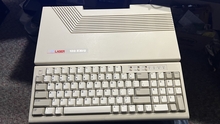
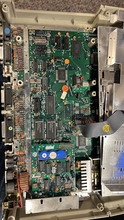
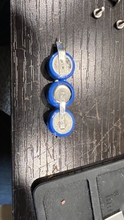
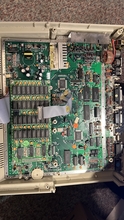
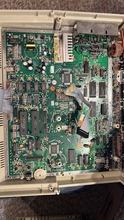
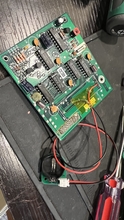
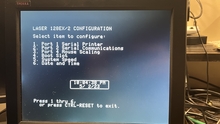
Great write-up! I immediately liked the start ("... and I remembered I had a Laser 128 EX/2... "). :)
...LIR2032 **Can anyone tell me if this is a bad idea for any reason??**
Not sure if that will work too well. These Li-ion cells nomally need 4.2V to be (fully) charged, with limited current. A cell at 3.0V is considered empty. A good protection circuit should shut off the cell at 3.0V to prevent further discharging. Otherwise you will quickly end up with a dead cell.
And if the board only provides 3.0V you will not be able to get much charge into the cell. Maybe it's just enough to keep the RTC running for a few days.
You could try to add a small Li-ion charger circuit - if it's worth the trouble.
Hmm.. Good point, totally forgot that Li-Ion is "dead" around 3.0v. The other alternative I had was just to throw a diode in line with the cell and use a primary lithium CR2032.. might make more sense.
I don't imagine there are NiMH coin cell 2032 equivalents, are there? May do a little research.. Thanks for pointing that out though!!
Edit: Just discovered there's a ML2032 Lithium Manganese Dioxide rechargeable that runs at 3V nominal vs 3.7v. Might do the trick.
Nice write up!
I actually emailed Renee Harke when I found the previously undumped ROM version in my older Laser 128. It is unfortunate to hear you haven't heard back from them either.
The Laser 128EX/2 was really a great machine. I sold a few of them back in the day and used a couple of them myself for a while before re-selling them.
I appreciate your note on the floppy drives. When I was in 6th or 7th grade, a friend's parents gave me an EX/2 with a 3.5" drive, that they had in their attic. I didn't appreciate what it was at the time, and took it apart... I haven't seen another one with a 3.5" drive, and I was wondering if I misremembered the model #.
I had one with the internal 3.5" drive back in the day. It was nice, but unfortunately the models with the internal 5.25" drive and an external 3.5" drive or a UDC in an expansion box with a pair of 3.5" drives was a more useful setup for me in those days.
Nowdays I rarely use a physical floppy disk, I mostly use some kind of flash storage, so it is less of an issue.
Read through your post on the 128 EX/2 and decided just for the heck of it to see if one was available. I've got an Apple //c+ but am curious about the EX/2. While I was looking at responses on google to my search I saw something you might like:
https://archive.org/details/laser128128ex128ex2usersguidebasicmanual1989ocr
I hope this can be if use to you.
Very cool! I have this manual but only for the EX. This confirms a lot of my guesses about the EX/2. I didn't know the battery backup for the clock preserved the other settings too, though.
What's always confuses me about the Laser 128 is the extra 64k of "video ram" it claims to have, though. So technically it's a 192k machine, and I verified that on the motherboard.
What good is that, exactly? Does it simply mean that when screens are loaded in any graphics mode there will be more program area available?
I know there were rumors of a "QHGR" Laser128-only graphics mode which basically doubled the DHGR horizontal resolution with similar features, but I've seen zero actual evidence of its truth. Some say it was removed in the later revisions, and rumor was the the feature was printed on early boxes...
QHR (and related modes) double the vertical resolution by stacking page 1 on top of page 2. Although most sources discuss vertically-doubled double-hires (so quad-hires or QHR), apparently you can stack any of the display modes. Note that my experience is second-hand, alas.
Conversation in many places including:
https://groups.google.com/g/comp.sys.apple2/c/hIGeXLAb1PE/m/MaQmOm_qd2oJ
https://archive.org/details/computist-scan-66 (page 21)
Softswitches include $C023 controlling the border color for graphics modes - which is interesting in "mixed" text/graphics mode, as the color burst is suppressed for the text window, so you get colored borders for most of the screen then gray bands. This I've seen in photos when someone was playing with it whilst chatting on Slack.
$C024..$C027 control the rest of the unique behavior. I've seen mixed descriptions of the precise behavior, but $C027 seems to enable the stacked mode, $C026 disables it. $C025 affects interlacing (?) and $C024 again disables it.
Sadly, most conversations with early Laser 128 owners seem to trail off once they've done some experimenting with these modes but before they write up comprehensive documentation including high quality photos. Grrrr..
Again, early Laser 128s only - the ones with the boxy white case, not the rounded gray case. So definitely not the EX or EX/2.
I played with the double vertical resolution modes on an early Laser 128 that I had back in the 1980s. It was interesting, but it was kind of flickery because I think it was interlaced on an NTSC monitor.